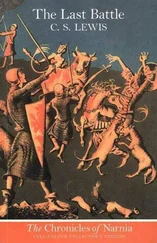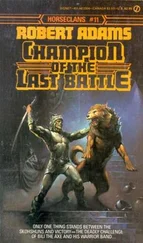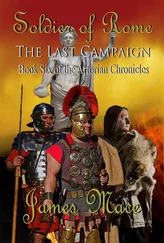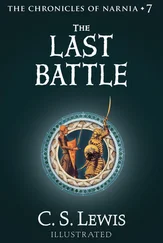Each day now Poganowska watched for certain signs that helped keep him from losing heart. For one thing the roads were still open. There were no roadblocks or tank traps on the main streets, no artillery pieces or dug-in tanks, no soldiers manning key positions. There was nothing to indicate that the authorities feared a Russian attack, or that Berlin was threatened with siege.
There was one other small but significant clue. Every morning as Poganowska drove through the sub-district of Friedenau, where some of his more prominent customers lived, he glanced at the home of a well-known Nazi, an important official in the Berlin postal department. Through the open living-room windows he could see the big portrait in its massive frame. The garish painting of Adolf Hitler, features boldly arrogant, was still there. Poganowska knew the ways of the Third Reich’s bureaucrats; if the situation were really critical, that shrine to the Führer would have disappeared by now.
He clucked softly to the horses and continued on his route. Despite everything he could see no real reason to be unduly alarmed.
No part of the city had been completely spared from the bombing, but Spandau, Berlin’s second largest and most western district had escaped the kind of attack everyone feared most : saturation bombing. Night after night the inhabitants expected the blow. They were amazed that it had not come, for Spandau was the center of Berlin’s vast armament industry.
In contrast to districts in the very heart of the city that had suffered 50 to 75 per cent destruction, Spandau had lost only 10 per cent of its buildings. Although this meant that more than one thousand houses were either destroyed or unusable, by the standards of raid-toughened Berliners that was a mere flea bite. A caustic remark was current in the bomb-blackened wastelands of the central districts: “Die Spandauer Zwerge kommen zuletzt in die Särge,” —The little Spandauites are last to reach their coffins.
On Spandau’s westernmost fringe, in the quiet, pastoral subdistrict of Staaken, Robert and Ingeborg Kolb were more than grateful to live in a kind of backwater. The only bombs that had fallen even close were those that missed the nearby airfield—and the damage was slight. Their two-story orange and brown stucco home, with its glass-enclosed veranda and its surrounding lawn and garden, remained unharmed. Life went on almost normally—except that Robert, the 54-year-old technical director of a printing plant, was finding the daily trip to his job in the city’s center increasingly arduous. It meant running the gamut of the daylight raids. It was a constant worry to Ingeborg.
This evening the Kolbs planned, as usual, to listen to the German-language broadcasts of the BBC, although it was a practice long forbidden. Step by step they had followed the Allied advances from east and west. Now the Red Army was only a bus ride from the city’s eastern outskirts. Yet, lulled by the rural atmosphere of their surroundings, they found the imminent threat to the city unthinkable, the war remote and unreal. Robert Kolb was convinced they were quite safe and Ingeborg was convinced that Robert was always right. After all, he was a veteran of World War I. “The war,” Robert had assured her, “will pass us by.”
Quite certain that no matter what happened they would not be involved, the Kolbs calmly looked to the future. Now that spring was here, Robert was trying to decide where to hang the hammocks in the garden. Ingeborg had chores of her own to do: she planned to plant spinach, parsley, lettuce and early potatoes. There was one major problem : should she sow the early potatoes in the first part of April or wait until the more settled spring days of May?
• • •
At his headquarters in a gray stucco, three-story house on the outskirts of Landsberg, twenty-five miles from the Oder, Marshal of the Soviet Union Georgi K. Zhukov sat at his desk pondering some plans of his own. On one wall, a large map of Berlin showed in detail Zhukov’s proposed offensive to capture the city. On his desk were three field phones. One was for general use; another linked him to his colleagues: Marshals Konstantin Rokossovskii and Ivan Stepanovich Koniev, commanders of the huge army groups on his northern and southern flanks. The third phone was a direct line to Moscow and the Supreme Commander, Josef Stalin. The barrel-chested 49-year-old commander of the First Belorussian Front spoke to Stalin each night at eleven, reporting the day’s advances. Now Zhukov wondered how soon Stalin would give the command to take Berlin. He hoped he still had some time. At a pinch Zhukov thought he could take the city immediately, but he was not quite ready. Tentatively, he had planned the attack for around the end of April. With luck, he thought he could reach Berlin and reduce all resistance within ten or twelve days. The Germans would contest him for every inch—that he expected. Probably they would fight hardest on the western edge of the city. There, as far as he could see, lay the only clear-cut escape route for the German defenders. But he planned to hit them from both sides as they tried to get out. By the first week of May he anticipated wholesale slaughter in the district of Spandau.
• • •
In his second-floor Wilmersdorf apartment, Carl Johann Wiberg pushed open the shuttered French windows of his living room, stepped out onto the little balcony and took stock of the weather. With him were his constant companions, Uncle Otto and Aunt Effie, two waddling, liver-colored dachshunds. They looked up at him expectantly, waiting for their morning walk.
Walking was about all Wiberg did to pass the time these days. Everyone in the neighborhood liked the 49-year-old Swedish businessman. They considered him a “good Berliner” first, a Swede second: he had not left the city like so many other foreigners when the bombing began. Moreover, although Wiberg never complained about his troubles, his neighbors knew that he had lost almost everything. His wife had died in 1939. His glue factories had been bombed out of business. After thirty years as a small businessman in Berlin, he had little left now but his dogs and the apartment. In the opinion of some of his neighbors he was a better man than many a true German.
Wiberg looked down at Uncle Otto and Aunt Effie. “Time to go out,” he said. He closed the windows and walked across the living room to the little foyer. He put on his beautifully tailored Chesterfield and settled his carefully brushed Homburg on his head. Opening the drawer of a polished mahogany hall table, he took out a pair of suede gloves and for a moment stood looking at a framed lithograph lying inside the drawer.
The print, sketched in flamboyant colors, showed a fully armored knight mounted on a rampaging white stallion. Attached to the knight’s lance was a streaming banner. Through the helmet’s open visor the knight gazed fiercely out. A lock of hair fell over his forehead; he had piercing eyes and a small black moustache. Across the waving banner were the words, “Der Bannerträger” —The Standard Bearer.
Wiberg slowly closed the drawer. He kept the lithograph hidden because the derisive lampoon of Hitler was banned throughout Germany. But Wiberg did not want to get rid of it; the caricature was too amusing to throw away.
Snapping leashes on the dogs, he locked the front door carefully behind him, and went down the two flights of stairs and into the rubble of the street. Near the apartment house he doffed his hat to some neighbors and, with the dogs leading, made his way down the street, stepping carefully around the potholes. He wondered where Der Bannerträger was now that the end seemed near. In Munich? At his Eagle’s Nest in the mountains at Berchtesgaden? Or, here, in Berlin? No one seemed to know—although that was not surprising. Hitler’s whereabouts was always a big secret.
Читать дальше












